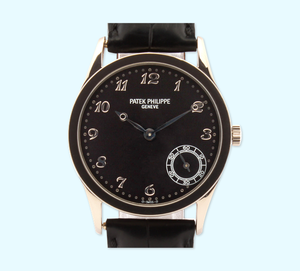
High interest rates, global tensions, and unprecedented trade tariffs have shaped the investment landscape in early 2025. With financing costs still high and economic outlooks clouded by geopolitical uncertainty, investors are increasingly turning to stability. As a result, many are reducing their exposure to riskier asset classes like equities or cryptocurrencies and strengthening the share of investments that offer long-term value preservation and resilience. But what does this mean for luxury collectibles?How have key categories held up — and where could new opportunities be emerging?
According to the latest Knight Frank Luxury Investment Index (KFLII), luxury collectibles declined by 3.3% in 2024 — the first drop in several years. While this marks a slowdown after the post-pandemic boom, it represents a healthy market correction rather than a sign of weakness.
Several key trends are driving this shift:
At the same time, the sub-€100,000 segment remains highly active. These collectibles — especially those from trusted brands — continue to attract steady interest. They’re more accessible, easier to resell, and still show strong long-term potential.
Most of the assets offered at our platform fall within this price range, making them well-suited for investors seeking stability and diversification in today’s more cautious market.

Performance in 2024 has varied by category. While the art market saw a sharp correction, segments such as watches, handbags, and classic cars continued to grow. These categories benefit from broad collector bases, global appeal, and everyday functionality.
By contrast, categories that rely more heavily on a smaller group of wealthy buyers — such as art, wine, and whisky — were more affected by changing sentiment and liquidity constraints at the top end of the market.
Despite the slowdown in some segments, market activity remains strong. In Q1 2025 alone, Timeless successfully exited eight (8) assets — across categories such as sneakers & art, delivering an average gross profit of 24.83% in an average holding period of 20.63 months.
| Asset | Holding Period (Months) | Gross ROI |
| Jadé Fadojutimi – Clustering Thoughts, 2019 | 4.5 | 18.18% |
| Thierry Noir – I Walk So Fast, 2022 | 3.5 | 27.66% |
| Thierry Noir – I Remain Calm Despite The Turbulence […], 2020 | 3.5 | 27.66% |
| Lynn Chadwick – Woman, 1976 | 0.3 (8 days) | 44.44% |
| 2x Nike Dunk Low – Heineken & Ben & Jerry’s | 42.6 | 20.69% |
| Nike Dunk Low ‘What The Dunk’ | 47.3 | 30.00% |
| KAWS Accomplice (Pink) | 37.2 | 13.92% |
| Gerhard Richter – Cage P19-3, 2020 | 21.9 | 16.09% |
These exits demonstrate that liquidity is still very much present. Buyers continue to act decisively when value is clear, especially in categories with strong secondary markets and collector interest. We are currently working on additional exits expected in the coming months.
In times of market volatility, a long-term strategy becomes even more important. While the growth of collectibles slowed in 2024 following the strong post-pandemic years, their fundamental value and long-term positive performance remain intact — nd in some areas, stronger than before.
This phase opens up new opportunities. With less speculation, valuations become more rational, and entry points are more attractive — which makes our buying strategy more competitive.
Collectibles continue to offer key advantages for long-term wealth building:
Our strategy focuses on sourcing assets that combine strong stories, recognisable brands, and broad collector appeal. These are the qualities that support long-term value — and that continue to drive demand, even in a more selective market.
Patek Philippe Calatrava Ref. 5026G

Picasso, Étude pour Compotier, 1950

Nike SB Dunk ‘Pigeon’ OG (US 9)
